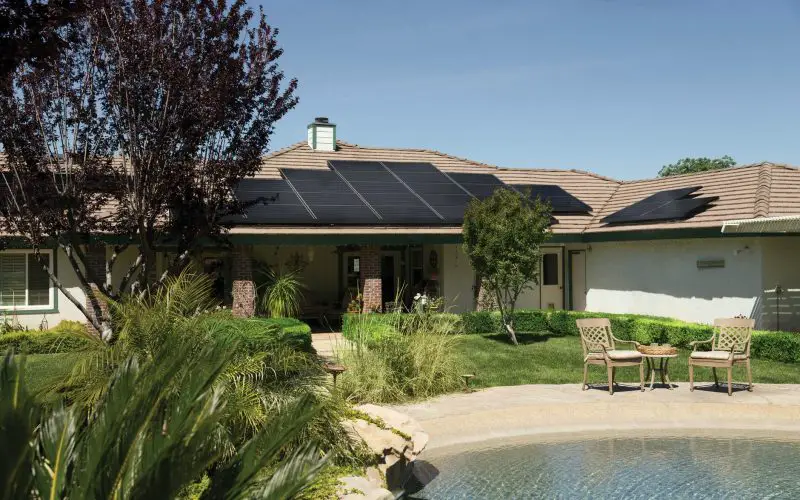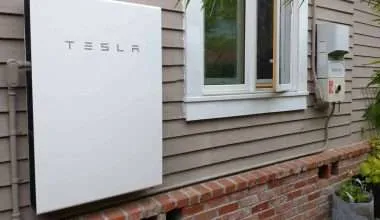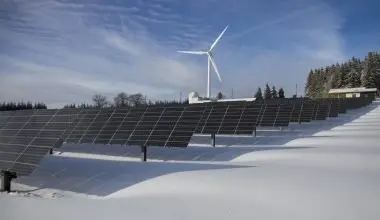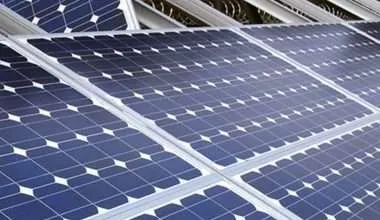Table of Contents Show
Sun is the most abundant and powerful source of solar energy. Recent technological advancements have made solar energy accessible and affordable for everyone.
The boom for solar power was recorded in 2017 when the global capacity of solar reached 400 gigawatts, supplying around 2% of the world’s energy. And that was just the beginning.
Solar has become the fastest growing energy source all over the world. Countless large and small-scale projects of solar energy have been planned for the upcoming years. It is anticipated that by 2022 the solar power capacity of the world would increase by three times and would reach upto 1200 GW.
Although Solar power has been growing substantially, it does face some technological constraints. The main concern of solar power is limited efficiency of photovoltaic solar panels which also limits maximum generation of electricity.
Many people are now switching to solar energy. If you are also thinking of switching to solar energy; Then you’ll greatly benefit by reading advantages and disadvantages of solar energy.
We’ve compiled them in a table and then discussed them in-detail ahead.
| Benefits of Solar Energy | Drawbacks of Solar Energy |
| Reduces Electricity bills | High Initial Investment |
| Net-metering (Giving back) | Intermittent Nature or Unreliable |
| Financial Support from Government | Low Efficiency |
| Excellent Return on Investment | May need to Replace roof |
| Secure Energy Future | Expensive Energy Storage |
| Highly accessible – (powering remote areas) | Manufacturing Environmental footprint |
| Countless Daily-use Applications | |
| Continuous Research and Development | |
| Increased Property Value | |
| Minimum Maintenance | |
| Environment-friendly | |
| Indirectly Good for Human Health | |
| No Noise Pollution |
Advantages of Solar Energy
Solar energy reduces your Electricity bills
Most of the home owners make the decision to buy solar to increase savings from their income. When you set up a solar system at your home; you will be less dependent upon utility companies because you will be generating your own electricity. Generating your own electricity will then obviously reduce your utility bills. According to a report, an individual can save upto $350 per month if they have invested in a 5 kilowatt solar photovoltaic system. Now isn’ t that impressive?
Net metering
In conventional systems, electricity used to be provided by utility companies only. WIth advanced technology your home now has the power to supply electricity to the grid.
The net metering program allows you to earn energy credits by supplying the energy to the grid. The purpose of this program is to encourage and support homeowners to switch to renewable sources of energy.
It is very easy to understand the program. When the solar panels make more energy than what you house needs to use, then that extra energy can be supplied to the grid and you will receive credits from the energy company.
The best part is that you don’t have to pay electricity bills because it often equals the amount supplied back to the grid!
Financial Support from the government
Many governments offer financial support in the form of tax incentives to homeowners willing to switch to solar energy.
For example, The US government offers around 30% tax credit for homeowners using solar energy. It is usually a dollar to dollar reduction in their income taxes. An estimate shows us that in 2019, an average 5KW solar system cost $15250 ($3.05/watt). However, after getting tax credit, it reduces to $10675.
As of 2020, the cost of a 5kw solar system has reduced to $14,800 ($2.96/watt).
You can even benefit from Solar Renewable Energy Credits (SRECs). The system of SRECs pays you by measuring your overall production of your solar system yearly. You would receive one SREC for 1000 kilowatts hours generated, it is expected that one SREC is about $300 but it varies according to the state in which you live in.
Return on Investment
Solar systems have a great ROI value because they cover their initial costs in the first 5 years and go on to run for at least 20 years.
Most of the solar system companies offer a product warranty of 20 – 25 years as well.
According to a study we can expect better return on investments as the technology of solar systems improves with better ways to harness and store solar energy.
Energy Security
The grid provides electricity generated by fossil fuels which are a non-renewable resource. As we all know non-renewable resources are depleting at a rate which makes the process highly unsustainable.
This could mean that if non-renewable resources were to be short in future, cost of electricity would increase in prices and at some point, not everyone would be able to afford it.
However, the cost of electricity produced from solar systems does not depend on fluctuations in oil prices. And because sunlight is free for all, no one can monopolize the resource.
The sustainable future is of renewable energy sources and solar is one of them.
Highly accessible source of energy
The sun showers 174 Terawatts (1015) of energy onto earth every second in the form of radiation. This makes solar the most abundant energy source available in the world. The sun shines almost everywhere which makes it very convenient to get access to solar energy from anywhere in the world.
This is considered as one of the major advantages because even remote areas disconnected from the grid can generate their own electricity. Solar energy is not just for powering homes because now there are portable solar power gadgets which can charge your phone, laptops, etc. on the go. This is especially important when you go for hiking or trekking in the mountains.
Wide variety of daily-use applications
Solar energy is not just confined to solar panels; there are solar water heaters which are used commonly to heat and store water in cool climates. The water is heated by absorbing heat from sunlight using solar thermal collectors.
Efficiency of solar water heaters is dependent upon sunlight; which is why on sunny days they can be very efficient and fulfill the demand of warm water.
Other uses of solar energy are in portable devices and electronic devices can be charged on the go. The only thing required is sunlight. However, they do have connecting cables so you can charge your gadgets if there’s not much sunlight.
The uses of solar energy don’t just end here. There are many outdoor electronic devices powered by solar energy such as garden lights or security systems. You don’t have to worry about charging since they have a small solar panel to charge them up.
Improving technology – Research and Development
The technology of solar has improved quite a bit over the years. Research is still going on to improve photovoltaic solar panels and hopefully make them more efficient. The potential of solar panels is enormous and could really change the energy sector for years to come.
Examples of extraordinary research prevails as a team of researchers at technion made a breakthrough recently by improving the efficiency of photovoltaic cells by around 70%.
Another innovation came into account from scientists who were successful to develop super-efficient solar cells which are capable of capturing 99.7% of light.
However, further testing and development will make sure we get access to it sooner than you may think.
Increased value of your House
Other than investment returns over the years, solar systems improve property value of your house. Although we can not predict an exact number because it varies according to your area.
However, it was studied in California that if a house is equipped with solar panels, its value would increase $5,000 which is quite impressive. As people are getting more and more aware of solar energy they are interested in buying places which already have solar panels installed.
Solar systems require little Maintenance
The solar panels are considered to be very durable mainly because they are usually installed where there is very low human interaction. They don’t have many moving parts which is why the chances of wear and tear are greatly reduced.
Many companies now which sell solar panels today offer a 20 – 25 year of warranty which makes customers assured about quality. Solar panels are made of tempered glass, being able to withstand moderate hailstorms without incurring any damage.
The only maintenance which the socal panels require is the cleaning of dirt and dust particles that add up over it. Dust particles cause shade over the panel which reduces efficiency. Cleaning the panels every week would be a good way to ensure maximum efficiency.
Solar energy is environment-friendly
Solar energy has no greenhouse gas emissions and air pollution in our atmosphere. Above that, it also reduces the burden on fossil fuels and other non-renewable resources.
In 2014, the installation of solar panels in the United States had amazing results as the total amount of emitted greenhouse gases dropped by 17 million metric tons.
Therefore, we can see that solar energy has a lot of potential when it comes to reducing greenhouse gas emissions. This is precisely why we should consider shifting towards a sustainable future.
Many of the renewable sources of energy use water, such as geothermal power plants which may cause ecological disturbances. This would reduce the water shortage and water pollution.
Solar energy doesn’t cause any damage to ecosystems while producing electricity. They’re quite the opposite and actually improve biodiversity.
Solar is good for human health
Whenever we go to places which have more greenery, we can feel the richness of clean air around us. The improved air quality comes with many great benefits to our health. Solar energy helps to do just that. It lowers the concentrations of nitrogen, sulfur and particulate matter in the air which we breathe as there is reduced burning of fossil fuels.
This actually helps to reduce the death rate by 25000 – 59000 people according to the US Department of energy. They even claim that these numbers can increase further if the whole world takes health problems into consideration while studying solar energy benefits.
Silent Operations
The modern world is full of noisy power plants and generators. However, solar panels work in absolute silence. Since we all are living in a modern society, silence is very rare since it is filled with sounds from all of our technology and devices.
Many people get very annoyed if they are exposed to higher levels of noise which has proven negative effects on mental and physical health. Noise increases a person’s heart rate and blood pressure making them more at risk to heart attack and stroke.
If you are someone who gets stressed out by noise then solar power is just for you. From all the renewable sources of energy, solar power is the most silent.
Disadvantages of Solar Energy
High Initial Investment
One of the disadvantages of solar energy is that the initial cost of setting up the whole system is high. It can reach upto $15,000 or even more in case you have a big house.
However, the moment you install it, your electricity bills are going to be reduced immediately. You might be interested in knowing the return on investment since we are talking about the cost. The return of investment comes in quicker than you think, covering initial costs in 3-8 years.
However, there is a solution to it. If you want to install the photovoltaic solar panels, you can finance them through loans, power purchase agreements and solar leases. Other than that, the Federal Tax credit is applicable all over the US which is 30%. Other than FTC, you can also check for other tax credits applicable to installing solar panels in your own area.
Intermittent Nature
Solar energy is generated from the sun. However if there is a cloudy day without sunlight, there might be problems in efficiency of the solar system.
At the moment, the unreliable nature of solar energy due to unpredictable weather patterns is one of the reasons why we should not rely on solar power. As we know already that the solar energy can just only be generated from sunlight; therefore cloudy days and on shorter days would mean the system would not be able to produce energy properly.
While making the decision about installing the system at your house you would also need to consider the weather patterns in your area.
Low efficiency of Solar Panels
A great deal of energy is lost while converting solar energy from solar panels into electricity which makes the efficiency of solar panels low and is one of the major drawbacks of solar energy.
The highest efficiency recorded by a commercially available panel was 15 – 18%. This would mean that according to your power needs if you have a larger house, then you would need more solar panels which would increase the initial cost of the solar system.
It is studied that solar panels installed in highly air polluted areas have an even lower efficiency rate as the dirt particles and air pollutants tend to block the sunlight.
However, we should not lose hope as the technology is improving day by day and many new materials are being tested to work under rugged conditions.
Space and Roof Material Requirements
A single solar panel has the size of 65 inches long and 40 inches wide. For a 5 kilowatt solar system installation, you would require 25 solar panels. This means you will need 135 feet in length and 83 feet in width in order to install the whole solar system.
That might be a problem for few people since they might not have the required open-space.
Another issue is of the materials your roof is made of. Many people don’t consider this but it is very important. If you have a roof at your house which is weak and built years ago, then it would need to be replaced because it might not be strong enough to hold the array.
However, people who don’t want to install the array on the roof can always go for the ground-mounted solar panels. This is especially good if you install them on a farm because solar panels have proven to improve farm biodiversity.
Expensive Energy Storage
Solar panels vary in how much energy they produce at a certain time. Sometimes they generate electricity more than required when the sunlight is at its peak and other times not at all like at night.
But we do have to make sure the house is powered up all the time for their to be no hassles in your everyday life.
The solution is using solar batteries. They will store the extra energy produced and then provide it at night, How convenient! The only problem to this is that solar power batteries come at a hefty price and require some maintenance. They even need to be replaced when needed, every 3-5 years or after 300-500 cycles.
Environmental Footprint to Manufacture:
We saved the best for last, Environmental issues of Solar energy.
We know that solar energy is a clean energy source because it emits negligible environmental footprints when compared with fossil fuels.
However, we can not say the same about manufacturing of solar panels as that comes with environmental implications. Solar cells are made by toxic and rare materials such as copper, indium, gallium, selenide or cadmium telluride. These materials can be really harmful for the environment and humans if they are not handled properly.
Conclusion
So we have concluded the advantages and disadvantages of solar energy and currently it can be observed that solar energy does have its disadvantages, but many of them have a technical nature and are likely to be overcomed by technological advancement. With that being said, Solar energy does have a promising future to eliminate pollution and defeat its competitors in electricity production.




